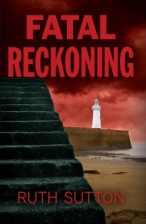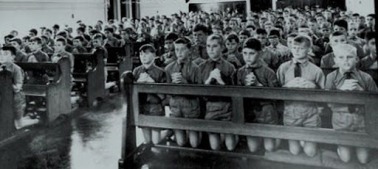With the ms of the new book with the copy editor, I’m thinking ahead to the upcoming stages of the book’s production. I’ll be using the same cover designer as on the previous five novels, and have a brilliant photo image already bought and paid for: now I’m wondering about the ‘back cover blurb’ so that the designer can get started.
All of which brings me to the business of finding a ‘quote’ ie. a brief endorsement of either the book, or me as the author, taken directly from a credible source who is willing and able to provide a phrase or two and put their name to them. Amazon readers’ reviews don’t cut it, I’m sorry to say. I’ve used ‘quotes’ on only two of my previous books: the first, on the reprint of ‘A Good Liar’, was hardly effusive, but its source was impeccable in Margaret Forster, an icon of the literary world and a famous Cumbrian. She told me when we started to correspond that she didn’t normally do any kind of endorsements, and I was both surprised and delighted when she agreed to this…..

‘Historical background is convincing, and an excellent ending’

‘A thrilling tale of corruption and exploitation’
The second was from William Ryan, a very successful historical fiction writer, for my first crime novel ‘Cruel Tide’. I’d met him on a course and appealed to him directly, not through his editor or agent, and again was very pleased when he agreed. I’ve not managed – until now – to get a ‘quote’ on any of my other books, but that’s not through lack of effort.
There appears to be some unwritten protocols and other barriers that stand in the way. First, it’s very hard to find a way of approaching an author to ask if they would be willing. I’ve recently been reprimanded because the approach wasn’t made indirectly by my editor. If I had an agent, the approach could presumably have been made that way. Authors don’t widely share their email addresses, understandably, and it is not in the interests of an editor, agent or publisher to have their precious ‘client/commodity’ distracted by a gesture of support to another author, especially – horror! – a self-published one.
Secondly, authors who are successful enough that their name counts for something are obviously going to be very busy people. A recent approach to one was rebuffed by a litany of the pressures that the person was currently having to deal with, which meant that there couldn’t possibly be time to glance through a proffered manuscript and offer a few words. I had used the phrase ‘a quick read’, which was been batted back to me as if it denoted a lack of respect.
The third possible reason for my relative lack of success in my efforts has been the suspicion that authors are asked (or expected?) by their agents and/or publishers to offer quotes only to writers from the same ‘stable’ as themselves. Heaps of ‘quotes’ appear routinely in newly published books, inside as well as on covers: presumably the people who provide them have been able to find the time for the ‘quick read’ or whatever it takes to enable a few phrases to be offered for this purpose. There are ‘insiders’ who scratch each others’ backs in this aspect of publishing, and there are ‘outsiders’ like me, and possibly some of you. As a self-publishing author of what is still known as ‘genre fiction’, I’m accustomed to being treated as some kind of low life, but it still rankles occasionally.
In my darker moments I wonder if this reciprocal endorsement accounts for the stellar ‘quotes’ that sometimes appear on the covers of books that are really not that good, or not up to the usual standards of the author. In my even darker moments I wonder how some of the books on the shelves ever got published at all without apparently being subject to a properly critical edit. Could it be that once your name is known and will sell a book on its own, you can get away with mediocrity?
On a more positive note, my latest book will have a quote on the cover from a well-respected writer in the crime fiction business. It will be what’s known as a ‘generic’ quote, speaking to my books as a whole rather than the new one in particular, and the person providing it – for which I’m very grateful – is someone I happen to know a little from sharing a book festival panel. We’d met and talked, and I could approach him directly without offence. I did, asked politely, and he agreed. Hurray.

 Readers love the Jessie Whelan trilogy for that reason. No one ever comments that the surprises of the plot kept them reading: it was all about what would happen to the people and the interest of the background.
Readers love the Jessie Whelan trilogy for that reason. No one ever comments that the surprises of the plot kept them reading: it was all about what would happen to the people and the interest of the background. ‘Cruel Tide’ and ‘Fatal Reckoning’ are mainly character driven, despite the skull-duggery of the plots. The tension is not so much ‘who dunnit?’, but ‘would the wrong doers be brought to justice?’ There was little in the way of police procedure as neither of the two main characters were senior police people, and the police were more concerned with covering things up than searching for evidence.
‘Cruel Tide’ and ‘Fatal Reckoning’ are mainly character driven, despite the skull-duggery of the plots. The tension is not so much ‘who dunnit?’, but ‘would the wrong doers be brought to justice?’ There was little in the way of police procedure as neither of the two main characters were senior police people, and the police were more concerned with covering things up than searching for evidence.
 the psychological thriller was destined to overtake most other sub-genres of crime fiction. There’ll always be a market for ‘cosy crime’, but the best-seller thrillers were at the other end of the spectrum, featuring graphic violence and sadism, much of which was either directed against or perpetrated by women, and written by women too. Highly improbable twists and turns were the order of the day, and the final climax was required to be sickeningly bloody.
the psychological thriller was destined to overtake most other sub-genres of crime fiction. There’ll always be a market for ‘cosy crime’, but the best-seller thrillers were at the other end of the spectrum, featuring graphic violence and sadism, much of which was either directed against or perpetrated by women, and written by women too. Highly improbable twists and turns were the order of the day, and the final climax was required to be sickeningly bloody. ublish my crime novels both as ebooks and POD, but I was less interested in writing further crime fiction if I couldn’t resolve my dilemma about the style.
ublish my crime novels both as ebooks and POD, but I was less interested in writing further crime fiction if I couldn’t resolve my dilemma about the style. Hundreds of boys were sent there and subject to appalling physical and sexual abuse, which was either not known about by both English and Australian authorities or was discounted or covered up to save them the problem of sorting it out.
Hundreds of boys were sent there and subject to appalling physical and sexual abuse, which was either not known about by both English and Australian authorities or was discounted or covered up to save them the problem of sorting it out. without giving away most of the plot was a challenge, so I relied on questions to pick up what my ‘audience’ wanted to discuss. ‘You obviously like to use specific local settings,‘ said one, ‘but what about people who nothing about the place? Doesn’t that specificity make them feel excluded and put them off?’
without giving away most of the plot was a challenge, so I relied on questions to pick up what my ‘audience’ wanted to discuss. ‘You obviously like to use specific local settings,‘ said one, ‘but what about people who nothing about the place? Doesn’t that specificity make them feel excluded and put them off?’ In my first crime novel ‘Cruel Tide’ the vast mudflats of Morecambe Bay and its sneaking tides are central to the plot. This can be achieved whether or not the reader knows the area herself. Local knowledge is not and should not be essential, but it adds another layer of enjoyment for some readers. This is especially so when the locality has previously been neglected in fiction, which I feel West Cumbria has been. Cumbria has been celebrated by many writers and poets, but not the west of the county, where the mountains meet the Irish Sea and seams of coal stretch further west under the waves. Coal and ore mining have gone, steel and iron works have closed, ship building has been replaced by nuclear submarines and commercial fishing is a shadow of past prominence, but the fascination of this coastal area continues and cries out to be shared. My next writing project may be different in characters and genre, but I’ve no doubt the setting will be the same, and hope it will be appreciated whether the readers are familiar with it or not.
In my first crime novel ‘Cruel Tide’ the vast mudflats of Morecambe Bay and its sneaking tides are central to the plot. This can be achieved whether or not the reader knows the area herself. Local knowledge is not and should not be essential, but it adds another layer of enjoyment for some readers. This is especially so when the locality has previously been neglected in fiction, which I feel West Cumbria has been. Cumbria has been celebrated by many writers and poets, but not the west of the county, where the mountains meet the Irish Sea and seams of coal stretch further west under the waves. Coal and ore mining have gone, steel and iron works have closed, ship building has been replaced by nuclear submarines and commercial fishing is a shadow of past prominence, but the fascination of this coastal area continues and cries out to be shared. My next writing project may be different in characters and genre, but I’ve no doubt the setting will be the same, and hope it will be appreciated whether the readers are familiar with it or not.
